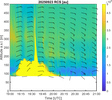A severe fire broke out on the evening of September 23, 2025, at a warehouse located in Sector 2 of Bucharest, on the former Antrefrig industrial platform in the Pantelimon district (Figure 1, top right). According to information provided by the General Inspectorate for Emergency Situations, the fire started around 20:00 local time in a cold storage hall on Aleea Hobița and spread rapidly due to the combustible materials inside. When the first firefighting teams arrived, the fire was fully developed, producing intense flames and thick smoke, affecting an area of approximately 7,000 m². Firefighting operations continued throughout September 24, focusing on demolishing the structure and removing smoldering materials. The effects of the fire were detected at a distance of 15.7 km southwest of the source by the high-precision instruments at the RADO-Bucharest Observational platform(Figure 1), part of the ACTRIS (Aerosol, Clouds and Trace gases Research Infrastructure) European research infrastructure. The station is operated by the National Institute for Research and Development in Optoelectronics – INOE 2000. Strategically located in the outskirts of Bucharest, the RADO-Bucharest observatory collects and provides data on atmospheric composition to European monitoring networks. These data are used in air quality and climate forecast models. Depending on the wind direction, the station measures pollutants originating from the urban area of Bucharest or compounds generated by agricultural and industrial activities in the surrounding peri-urban areas of Măgurele and Ilfov.

Figure 1. Map of Bucharest showing the location of the Pantelimon fire (top right) and the position of the RADO-Bucharest observatory (bottom left). Fire image source: ProTV, https://stirileprotv.ro.
At the time of the fire, Bucharest was under stable atmospheric conditions, with light to moderate winds. The predominant wind direction, measured at the local meteorological station, was from the northeast and east toward the RADO-Bucharest observatory (Figure 2, left). Smoke particles were dispersed vertically up to 400 m in altitude. The vertical distribution of the smoke plume was assessed using a Lufft CMH15k ceilometer (Figure 2, right), which measures backscattered radiation generated by its laser source. Elevated particle concentrations up to 400 m are indicated by intense colors during the 22:00–23:00 local time period (19:00–20:00 UTC). Vertical wind profiles measured by the Doppler Wind Lidar (DWL) indicated air movement primarily from the east (represented by overlaid black wind barbs). This circulation pattern was also confirmed by the HYSPLIT model, which estimates the trajectories of air masses at various atmospheric levels.
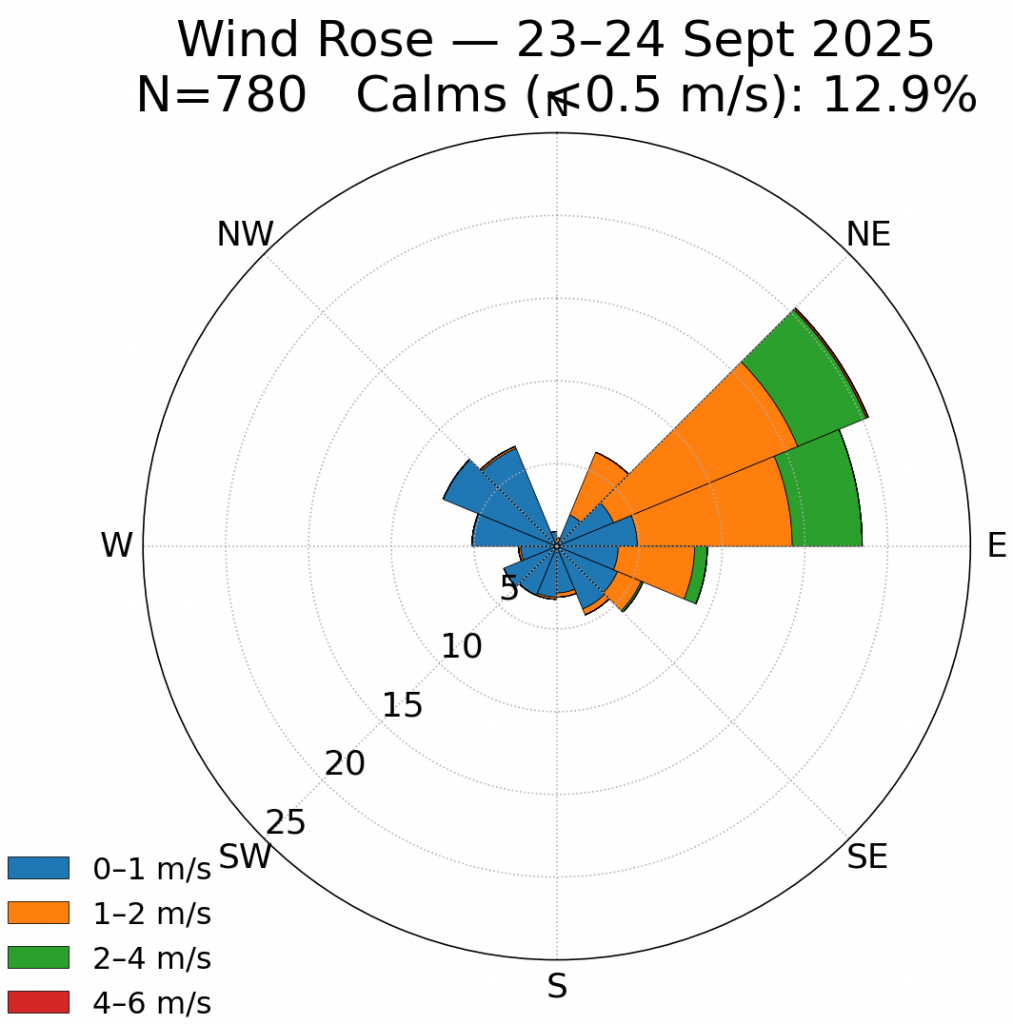
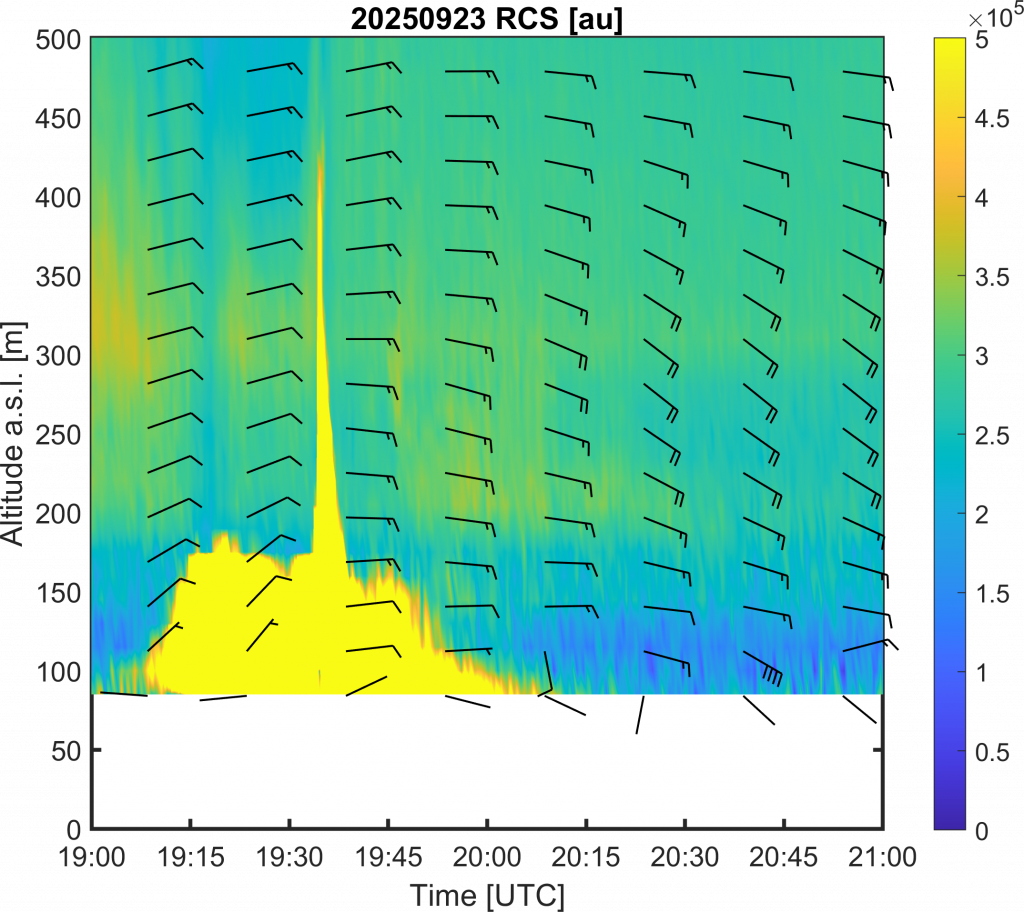
Figure 2. Wind direction and speed at 10 m measured by the meteorological station between September 23, 17:00 UTC (20:00 local time) and September 24, 06:00 UTC (09:00 local time) (left), and temporal series of backscattered radiation from molecules and particles (color scale) and wind (black barbs) in the atmospheric column, measured with the Lufft CMH15k ceilometer and Doppler Wind Lidar (right), on September 23, 2025, 19:00–21:00 UTC (22:00–23:00 local time) at RADO-Bucharest.
Smoke particles were detected by surface monitoring instruments, including the Aerosol Chemical Speciation Monitor (ACSM), the GRIMM EDM 180 optical particle counter, and the Picarro G2311-f gas analyzer, which operate continuously (24/7) at RADO-Bucharest. Around 23:00 local time (20:00 UTC), instantaneous PM1 mass concentrations measured by the ACSM (Figure 3, top) reached approximately five times higher than the previous day’s values. Rapid chemical analysis for source identification indicated that secondary aerosols, oxidized in the atmosphere rather than generated locally, contributed significantly to the fine particle load. Data from the GRIMM EDM 180 optical particle counter (Figure 3, bottom) show multiple sharp increases in particle concentrations following the fire, with PM10 instantaneous mass concentrations reaching up to 150 µg/m³ around 23:00 local time (20:00 UTC).
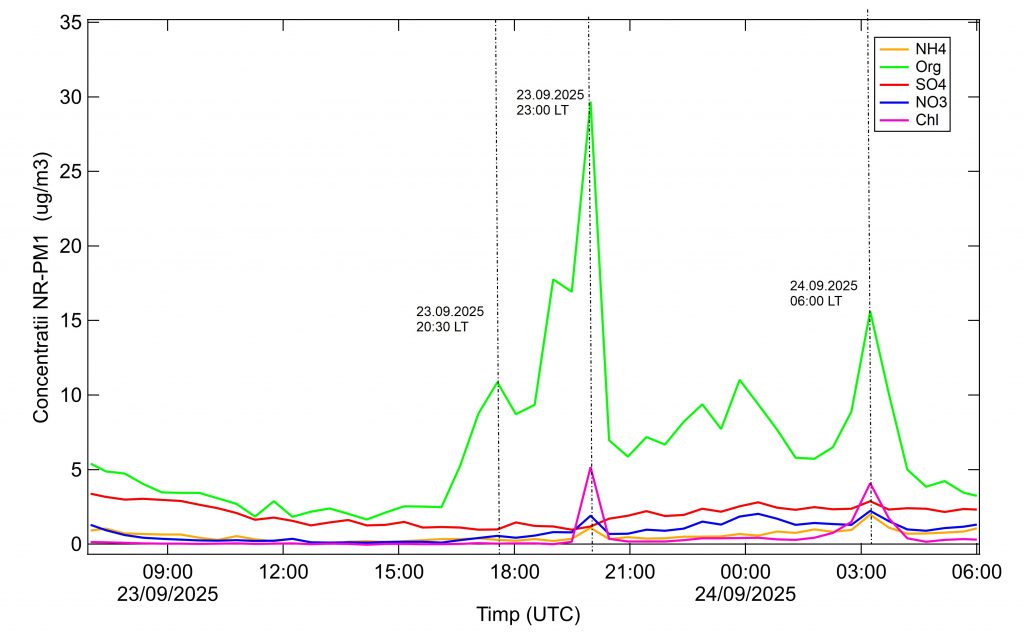
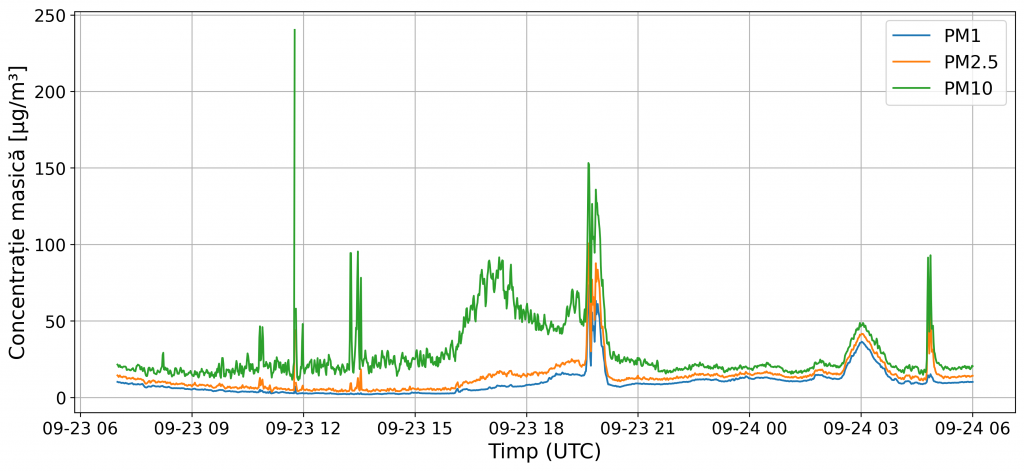
Figure 3. Time series of PM1 mass concentrations measured by the ACSM (top) and time series of PM1, PM2.5, and PM10 mass concentrations measured by the GRIMM EDM 180 optical particle counter (bottom) between September 23–24, 2025, at RADO-Bucharest.
Significant increases in CO₂ concentrations were also detected by the Picarro G2311-f gas analyzer (Figure 4). Normally, CO₂ concentrations are higher at night compared to daytime due to photosynthetic activity. Comparing the values recorded on the night of September 23, 2025, with the previous night, a noticeable excess is observed, suggesting an external contribution to the CO₂ levels, likely associated with the increased smoke particle concentrations from the fire.
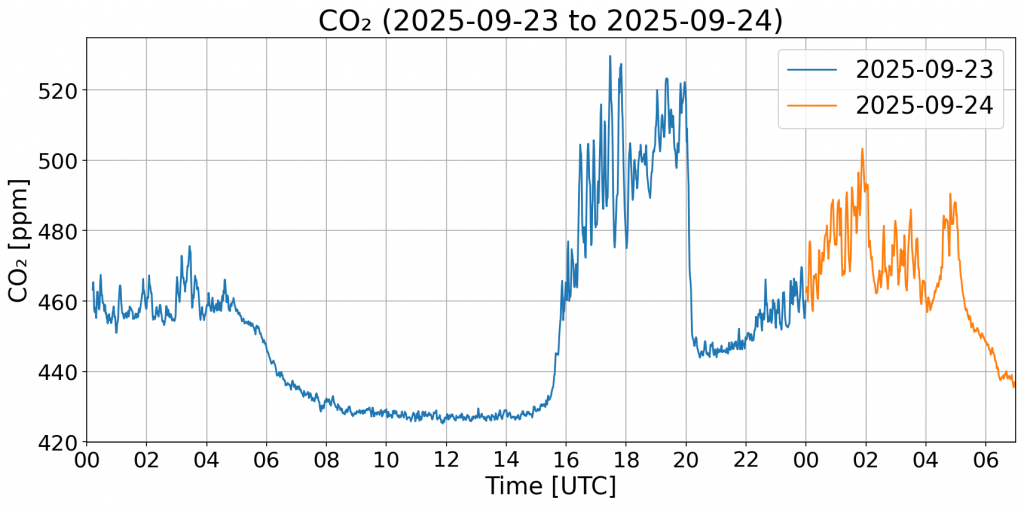
Figure 4. Time series of CO₂ concentrations measured by the Picarro G2311-f gas analyzer for September 23–24, 2025.
This pollution event on September 23, 2025, after 20:00 local time, highlights that local pollution sources can have significant impacts not only in their immediate vicinity but also at considerable distances from the origin.

